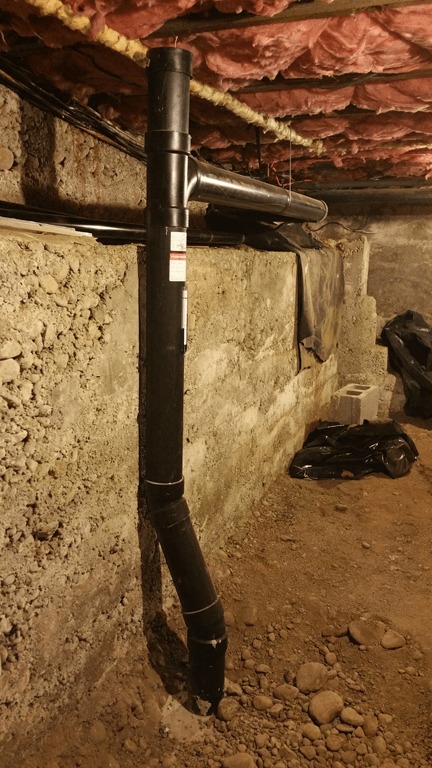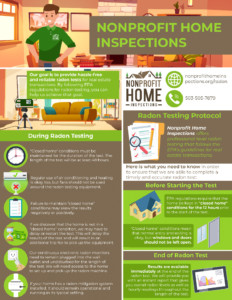Radon Testing
Obtaining Portland radon testing is one of the most important steps you can take to protect the health of your family when buying a home in Oregon. Radon studies estimate that 1 out of 4 homes in the Portland metropolitan area has elevated levels of radon that should be mitigated. It can be relatively easy to mitigate radon if discovered in your new home, but it’s best to get a professional test done before closing your real estate transaction so you’ll be able to negotiate the costs of mitigation into your purchase agreement.
Nonprofit Home Inspections offers professional level Portland radon testing that follows the EPA’s guidelines for real estate transactions. We use continuous electronic radon monitors that provide instantaneous results after the minimum testing period. Tests run for between 2 to 7 days under “closed home conditions” (meaning normal entry and exit, but not leaving windows and doors open). Ideally the tests will run as long as possible, but the EPA mandates a minimum of 2 days for real estate transactions. At the end of the test, we will provide you with an instant report that gives you overall radon levels as well as hourly readings throughout the length of the test.
To find out more about radon in Portland and surrounding communities, feel free to browse through our collection of radon testing procedures, frequently asked questions and radon testing policies. Once you have studied up on radon testing in Portland, feel free to schedule radon testing today!
Radon Testing Procedures
Before Starting the Test
Closed home conditions must be maintained for 12 hours prior to starting the radon test.Closed Home Conditions
“Closed home conditions” means that normal exit and entry from the home are okay, but doors and windows shouldn’t be left open.
During Radon Testing
Closed home conditions must be maintained for the entire testing period (typically 48 hours).Closed Home Conditions
Not maintaining closed home conditions will invalidate test results and may slow down the real estate transaction.
End of Radon Test
Results are available immediately at the end of the radon test.Best Equipment
Our professional grade continuous radon monitors allow for immediate results at the end of the testing period.
Radon – Frequently Asked Questions

Radon Testing Policies
Missed Appointments
Missed appointments for setting up or retrieving radon equipment are $50.Maintain Scheduled Appointments
Because of the high cost of labor and gas, we must charge $50 for missed appointments to drop off or retrieve radon equipment. Help avoid additional charges by making sure that your real estate agent or other responsible party keeps their scheduled appointments.
Re-Testing on Request
If closed home conditions are not met, re-testing can be requested at the same rate.Communicate With Current Occupants
Please communicate to the current occupants the importance of maintaining closed home conditions during the testing period. Signs will be posted on site, but please reinforce the importance of maintaining proper testing conditions.
Testing In Advance
Radon equipment can be set up in advance of your home inspection for rapid results.Contact Your Inspector
Let your inspector know if you would like to have radon equipment set up in advance of your inspection. Because of the closed home conditions requirement, this must be done at least 3 days in advance of your scheduled home inspection.
Radon Testing Protocols
Please click on the image to the right to download an infographic PDF that details the radon testing protocols that should be followed for radon testing. Please share this information with your real estate agent, clients and home occupants as appropriate. Following the radon testing protocols will help the radon testing process go quickly and smoothly. Thank you in advance!


